Rwanda gorilla trekking tours rank among the most thrilling wildlife experiences you might experience in Africa. This guide provides crucial practical information to prepare for your gorilla trekking safari in Rwanda.
We cover reasons why you should go gorilla trekking in Rwanda, how to secure your gorilla trekking permit, Rwanda gorilla trekking tours price, the minimum age requirement for a gorilla trekking tour in Rwanda, and more.
Need some assistance? Rest assured that we are eager to help you plan your Rwanda gorilla tour itinerary and arrange your gorilla trekking permits. Please don’t hesitate to reach out for additional information and guidance.
Why Go for Gorilla Trekking Tours in Rwanda?
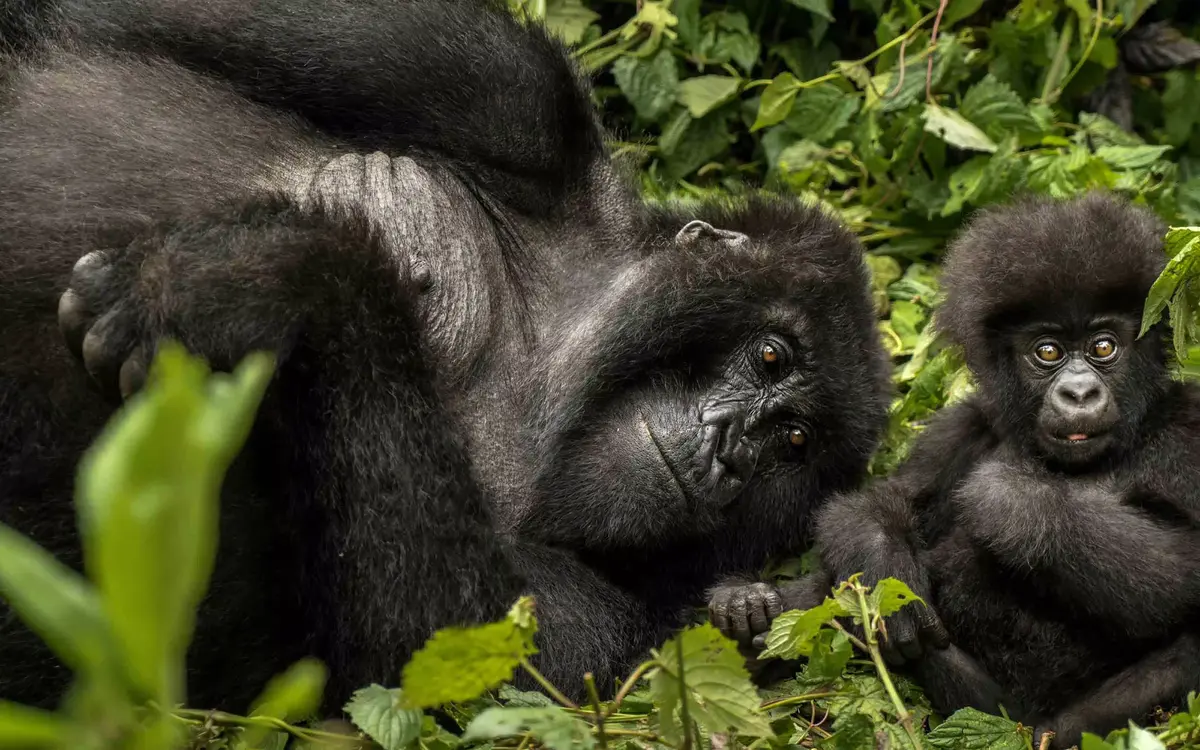
1. Has 30% of the World’s Mountain Gorillas
Approximately 30% of the world’s mountain gorillas – some 300 gorillas – live within the 160 km2 Volcanoes National Park in Rwanda. This gorilla park protects Rwanda’s portion of the Virunga Mountains.
The Virunga are a spectacular chain of volcanoes that rises from the floor of African Great Rift Valley to a maximum elevation of 4,507 meters. It is also where Dian Fossey conducted her gorilla research for nearly 20 years.
The park offers an exceptional concentration of gorillas within a relatively small area.
Gorilla tours here are special as the park is home to 12 gorilla families that are habituated or tolerant of the presence of small numbers of humans.
That means that after a certain amount of trekking with your local guides (who are intimately familiar with the gorillas’ movements and habits), you and a maximum of 7 other people will be able to settle into a spot where you can quietly watch and take photographs of as many as 20 wild gorillas.
You’ll see them as they go about their daily business; eating, grooming, dozing, and playing – for up to an hour.
3. In-Depth Learning About Gorillas
An integral part of our Rwanda gorilla trekking tours is the thorough education you’ll receive about these awe-inspiring primates. During your trek amid the rainforest jungle of the Volcanoes to find gorillas – and afterward, over meals and talks at your comfortable lodges – our guides will impart a wealth of gorilla-related wisdom.
You will learn more about these Great Apes’ formidable physical power and how according to studies, a male silverback can weigh more than 220kg, has nine times the strength of an average human, and can bite more forcefully than a lion. You will also know that the mountain gorillas are fundamentally shy and gentle.
You’ll learn about how they form long-lasting family bonds, dote on their young, and spend most of their waking lives peacefully foraging for plants to eat. Gorillas can consume up to 18 kilograms of leaves, bark, roots, and fruit per day.
You will also learn that gorillas are highly intelligent and intensely curious—which you may be lucky enough to witness first-hand if an inquisitive young gorilla tries to move close to your viewing group (for the gorillas’ safety and yours, park rules require keeping a distance of around 7 meters).
3. Attentive Guidance And Luxurious Lodges
Rwanda gorilla trekking tours can be difficult.
While stunningly beautiful, teeming with lush vegetation and birdsong, the montane forests of Volcanoes National Park where the gorillas live are also steeply pitched, sometimes muddy, and can only be traversed on foot.
Reaching a spot where you can view gorillas might take a 2-hour hike each way (one reason why all trekkers in the Volcanoes National Park are required to be at least 15 years of age.
Still, the expert Rwanda gorilla trekking tour guides ensure you will have plenty of assistance along the hike. They will gladly help you navigate tricky trails. Once you have finished your day’s adventure, you get to relax, share stories and photos, and dine and drink in supreme comfort at one of the opulent safari lodges in Rwanda.
Whether you choose to unwind after your Rwanda gorilla trekking tours with a long bath in your soaking tub at Sabyinyo Silverback Lodge or a fireside glass of wine in your eco-chic pod at Bisate Lodge, you will feel pampered, revived, and ready for another day of gorilla adventures.
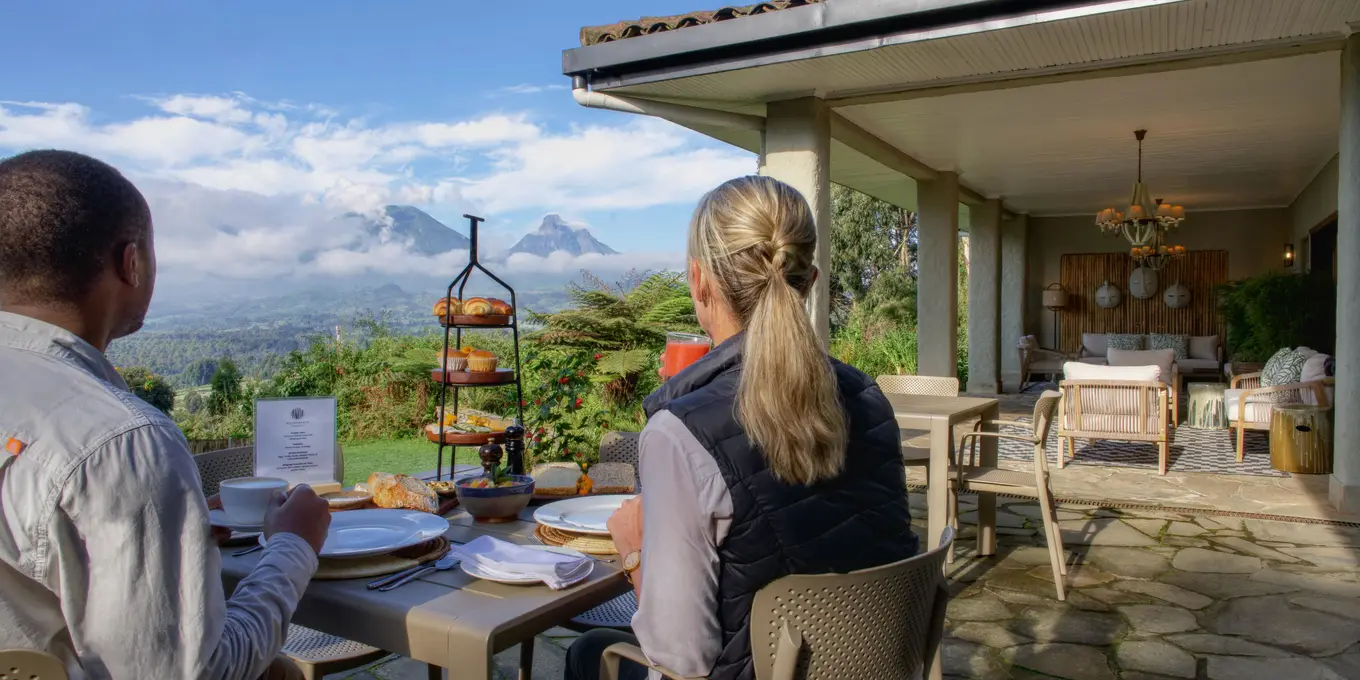
Best Rwanda gorilla trekking Tours Packages
We provide various Rwanda gorilla trekking tour options, spanning from brief one-day trips to extended ten-day safaris and tours. These Rwanda safari packages integrate gorilla trekking with other safari activities like chimpanzee tracking, wildlife game viewing, and cultural engagements. Our Rwanda gorilla trekking safari offerings are flexible and can be tailored to match your preferences and financial plans.
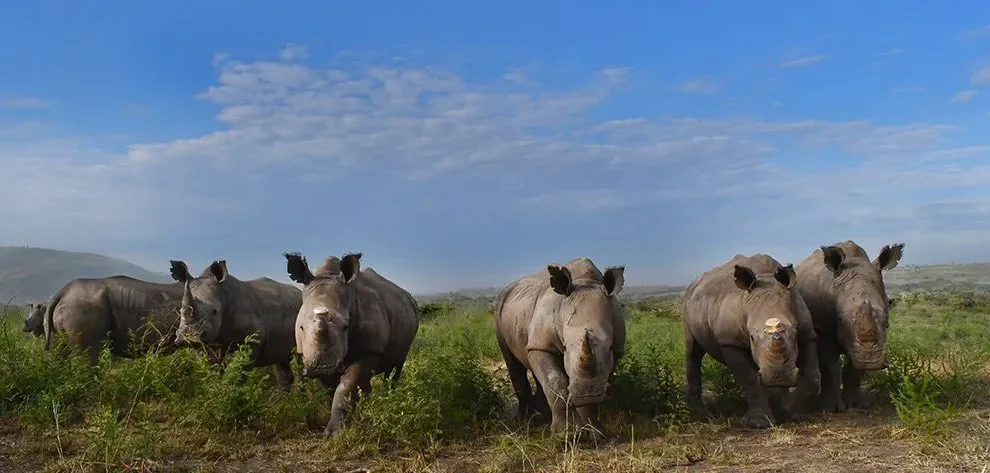
7-Day Rwanda Wildlife & Gorilla Safari Adventure
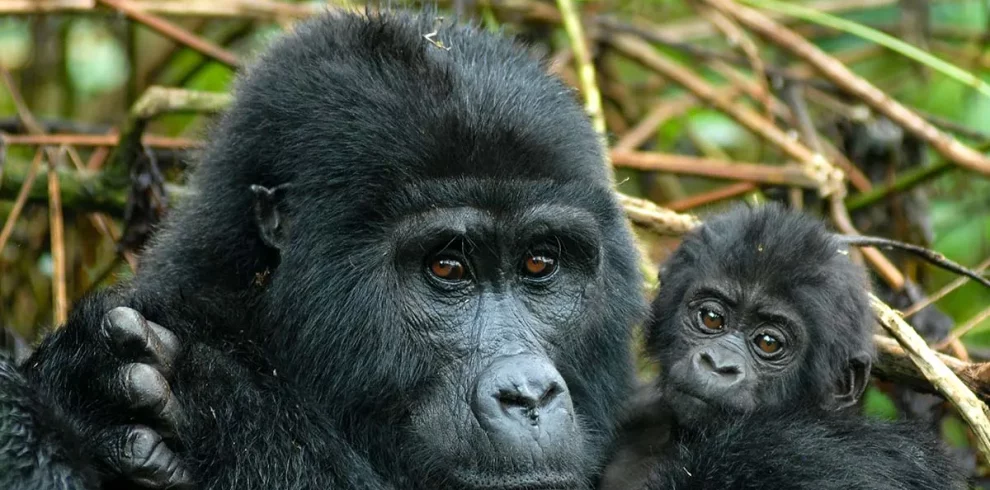
4 Days Affordable Rwanda Gorilla & Genocide Memoria Tour

3 Days Gorilla and Golden monkeys Tour in Rwanda
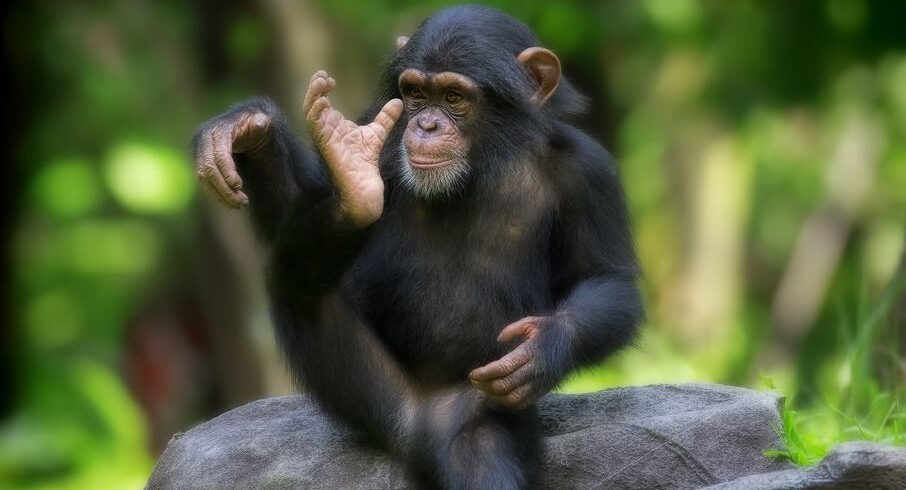
10 Days Rwanda Safari: Big 5, Chimps, Gorillas & More!
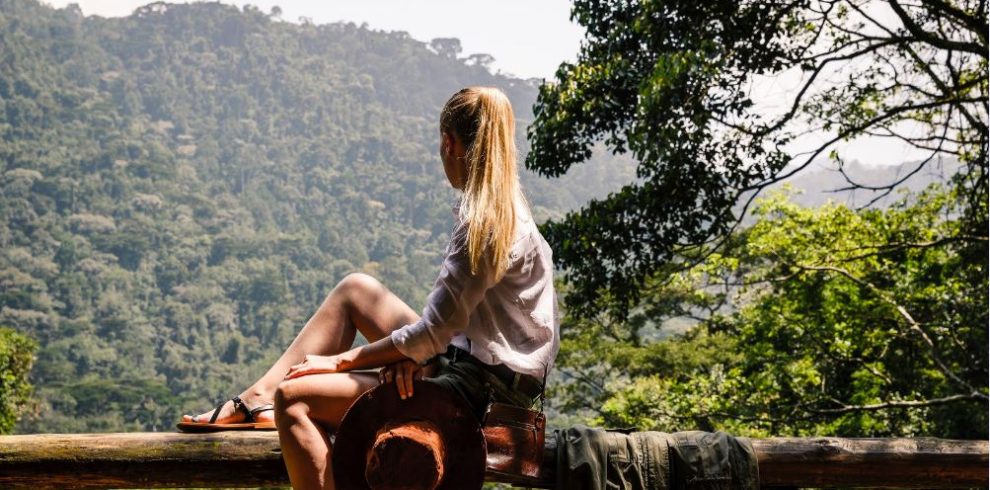
6-Day Luxury Rwanda & Uganda gorilla Tour
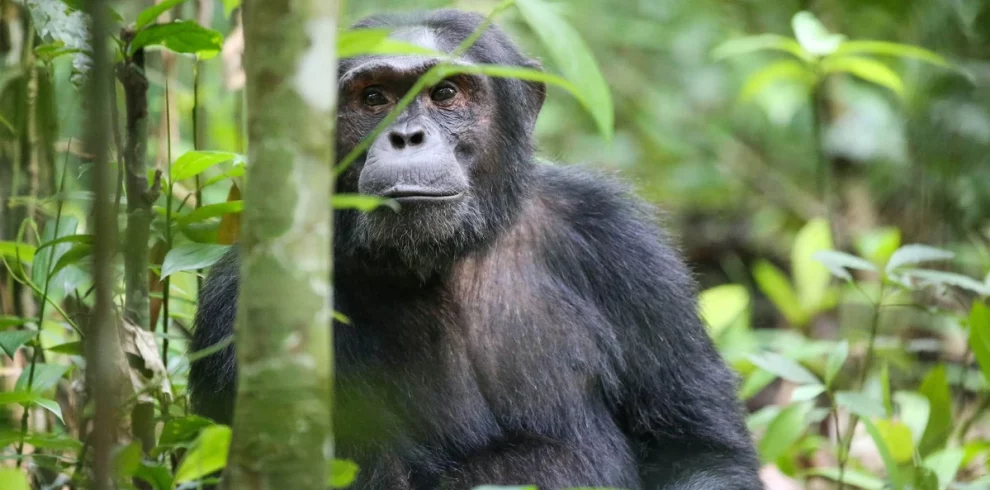
10-Day Rwanda and Gorillas of Uganda Safari
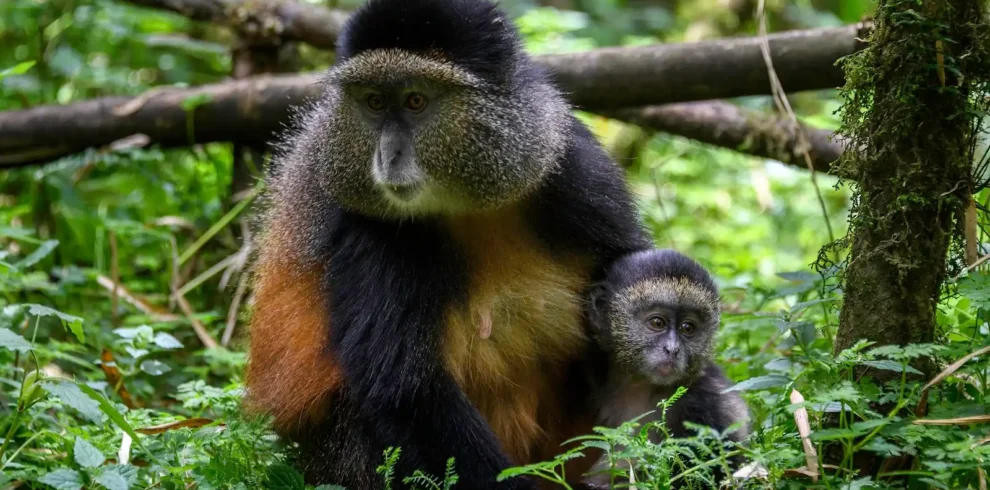
6 Days Rwanda Gorilla, Community & Conservation Safari
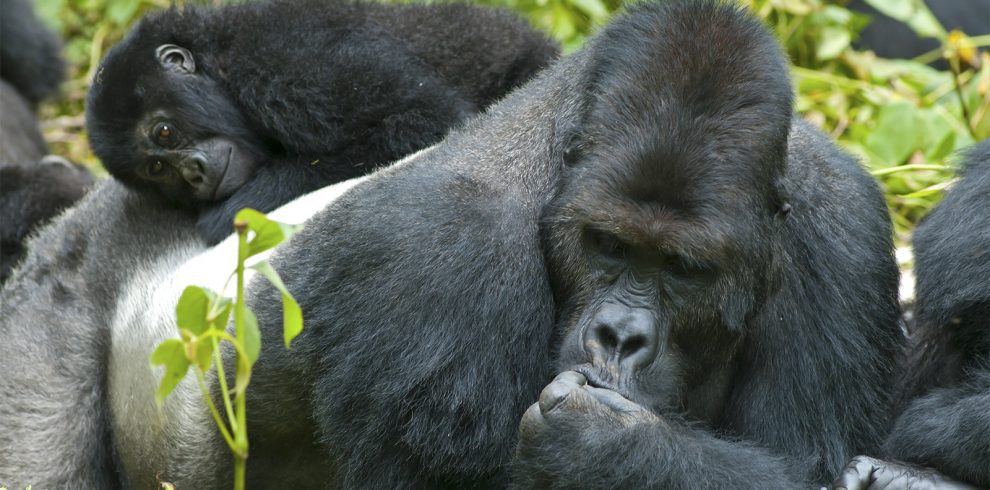
2 Day Gorilla Gorilla Tour Uganda Via Kigali, Rwanda
Combine Your Trek With Other Africa Safaris
While witnessing gorillas in their natural habitat is an unforgettable experience, Africa offers a wealth of other incredible attractions and safari activities. You can consider embarking on a safari tour to Uganda or the Serengeti and Masai Mara to encounter the Big 5 animals of Africa and the great wildebeest migration or continue your adventure with a trek up Mount Kilimanjaro, the continent’s highest peak.
You can seamlessly integrate your gorilla trek into a broader African journey by choosing from the following trips.
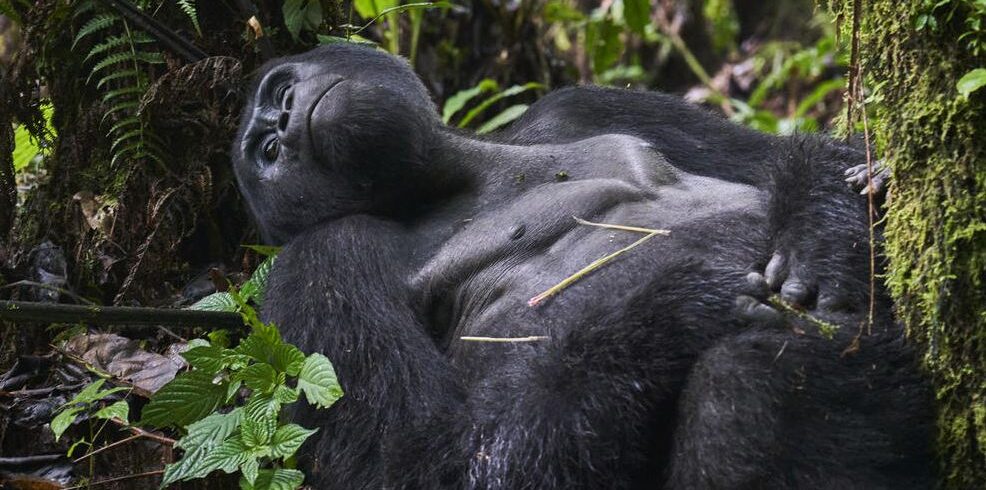
15 Days East Africa’s Gorillas, Chimps, Safari & Beach Holiday
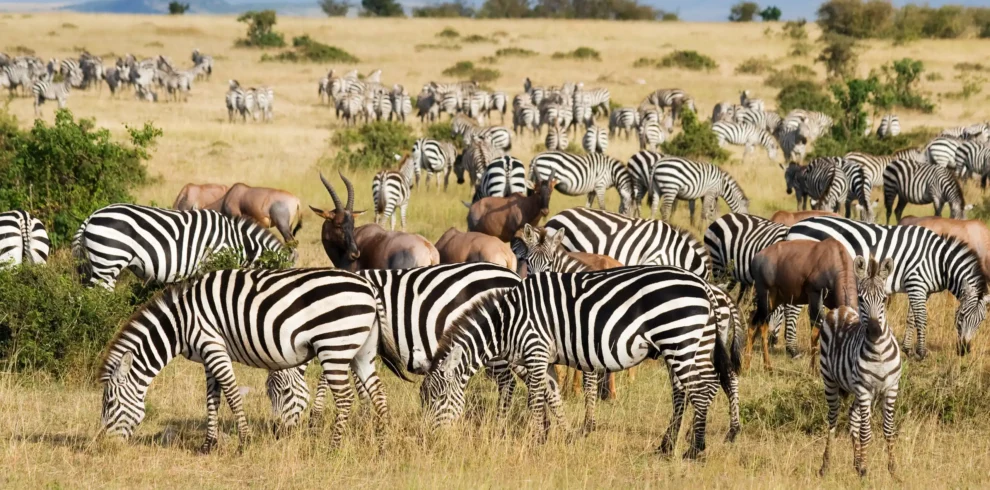
20-Day Uganda, Kenya & Tanzania Safari Vacation
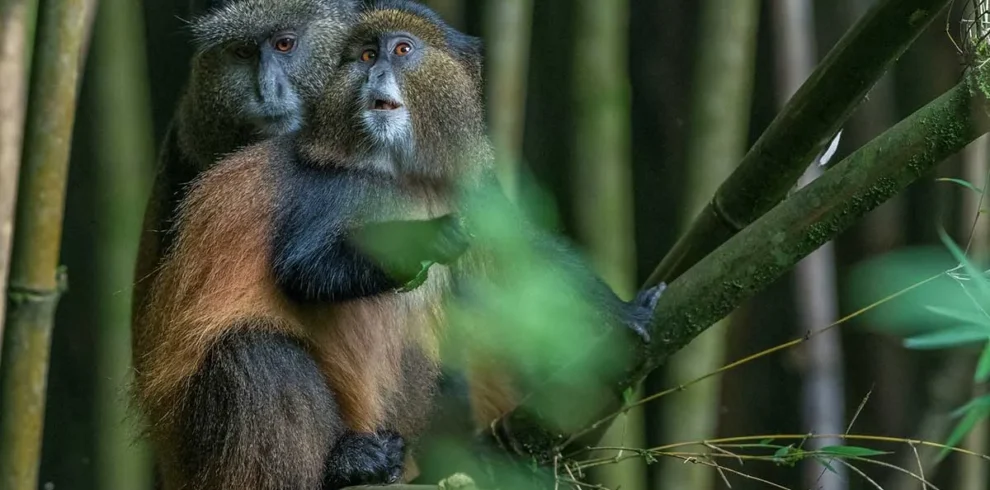
12-Day Uganda Rwanda Safari – The Ultimate Itinerary
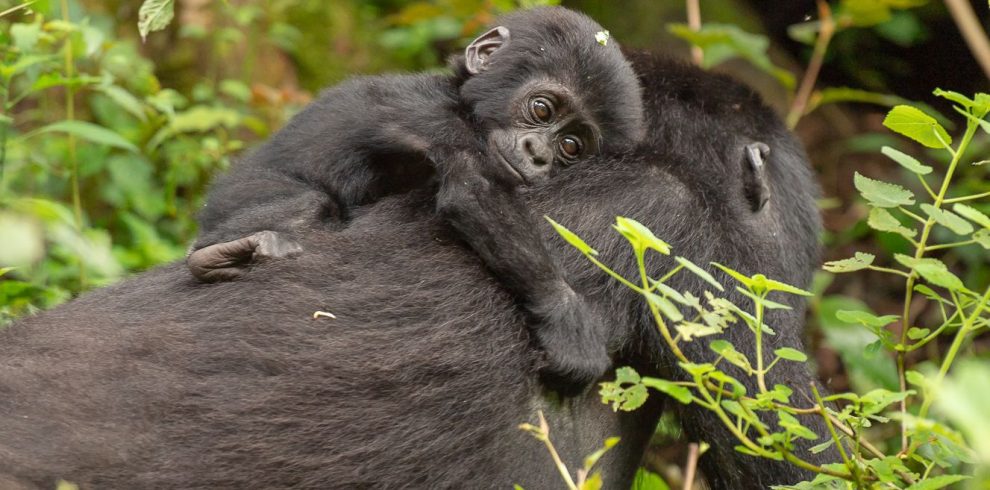
14 Days Uganda to Rwanda Safari: Primates & Wildlife
FAQs About Rwanda Gorilla Trekking Safaris

1. Where to go gorilla trekking in Rwanda?
Gorilla trekking in Rwanda takes place in Volcanoes National Park, which is home to 12 habituated gorilla families. The terrain here is generally less dense and more open compared to Uganda’s Bwindi Impenetrable Forest, making the trek easier for some visitors.
The park is well-developed with good infrastructure, conveniently located just a three-hour drive from the international airport, and offers comfortable accommodation nearby. However, it’s worth noting that gorilla trekking permits in Rwanda are notably more expensive than those in Uganda.
2. Do I Need A Permit To Trek Gorillas in Rwanda?
A gorilla permit is mandatory for anyone wishing to track gorillas, whether in Rwanda’s Volcanoes National Park or nearby countries. This permit system serves two main purposes: it enables park authorities to control the number of visitors per gorilla group per day, and the fees generated provide crucial funding for gorilla conservation, habitat preservation, and support for local communities residing around the park.
3. How much does it cost to go gorilla trekking in Rwanda?
As of 2024, one mountain gorilla trekking permit in Rwanda costs $1,500 for international visitors.
Rwandan citizens and residents from East African nations can obtain the permit for $200. Foreign residents in Rwanda and citizens of other African countries pay $500.
For comparison, the cost of a gorilla trekking permit in Uganda’s Bwindi Impenetrable Forest or Mgahinga Gorilla Parks is US$800 for foreign non-residents, US$700 for foreign residents, about US$80 for East African citizens and US$500 for citizens of other African countries.
Meanwhile, in the Democratic Republic of Congo, a gorilla permit costs $400; however, Virunga National Park, the only location for mountain gorilla trekking, has been closed to tourism since March 2020 due to COVID-19 and ongoing security concerns.
It is currently possible to go gorilla trekking in DR Congo’s Kahuzi-Biega National Park, where you will have a chance to visit the rare Eastern Lowland Gorillas as opposed to Mountain Gorillas, but do bear in mind that the Congo is potentially less secure than Rwanda or Uganda.
As of the current period, a 30% discount is available on Rwanda gorilla permits from November to May, reducing the price for non-African residents to $1,050 during these months. This discount is contingent upon visitors booking at least two nights in Akagera National Park, Nyungwe National Park, or one night in each park.
4. How To Book Gorilla Trek Rwanda?
Independent travelers can book the permits for Rwanda gorilla trekking tours directly through the Rwanda Development Board website.
If you are planning your Rwanda safari with a tour operator, they typically handle the gorilla permit booking process. Due to high demand, permits for specific days are often fully booked well ahead of time, making it advisable to secure yours before finalizing other travel arrangements.
5. What is the age limit for gorilla trekking?
All three countries (Uganda, Rwanda and Congo) where gorilla trekking is permitted have mutually agreed to enforce a minimum age requirement of 15 years.
There is no maximum age limit imposed on gorilla trekkers; however, since the activity can be physically demanding, elderly travelers or those with limited mobility should assess their own capabilities before deciding to participate. You may also like; Can Children go gorilla trekking?
6. Is It Possible To Cancel My Gorilla Permit?
If you cancel your Rwanda gorilla trekking tour or do not show up on the scheduled day, your gorilla trekking permit fee will not be refunded. Additionally, it is strictly prohibited to transfer or sell your gorilla permit to someone else, as your passport details will be cross-checked with the permit before the trek.
However, if you book your permit through a tour operator, it is generally possible to reschedule for another day provided you give at least 30 days’ notice.
There are exceptions: If your allocated gorilla family unexpectedly moves and you are unable to track them, you’ll be given the option to try again the next day or receive a full refund. If you spend the entire day tracking but do not encounter any gorillas, you are entitled to a 75% refund of the permit fee.
7. How difficult is gorilla trekking in Rwanda?
Gorilla trekking in Rwanda can vary in difficulty based on factors like the gorilla family group visited, weather conditions on the trekking day, and individual physical fitness levels.
Typically, gorilla trekking ranges from moderately to highly physically demanding. Nonetheless, with appropriate gear for gorilla trekking and guidance from an experienced support team, nearly anyone can participate in and complete a gorilla trekking experience. To know more about how hard is gorilla trekking, please read our blog.
8. Is Rwanda better than Uganda for gorilla trekking?
Both Uganda and Rwanda offer excellent options for gorilla trekking, but the choice depends on your specific preferences. One crucial factor to consider when comparing mountain gorilla trekking experiences in Rwanda and Uganda is the cost.
For foreign non-residents, a permit for gorilla trekking permit costs US$800, while in Rwanda, it is US$1,500 – a significant price difference.
For more detailed insights into gorilla trekking in Uganda versus Rwanda, please refer to our blog.
9. How safe is gorilla trekking?
Gorilla trekking in Rwanda is highly safe. Despite their size, these magnificent apes are known for their gentle nature. Instances of incidents involving travelers are extremely rare.
The gorillas you encounter during your trek are habituated to human presence and perceive people as non-threatening. It’s crucial to attentively follow the safety briefing before your trek and adhere to the instructions provided by your guide. This is particularly important in rare situations such as a gorilla mock charging or when encountering curious juvenile gorillas.
10. Should I Do More Than Gorilla Trekking in Rwanda?
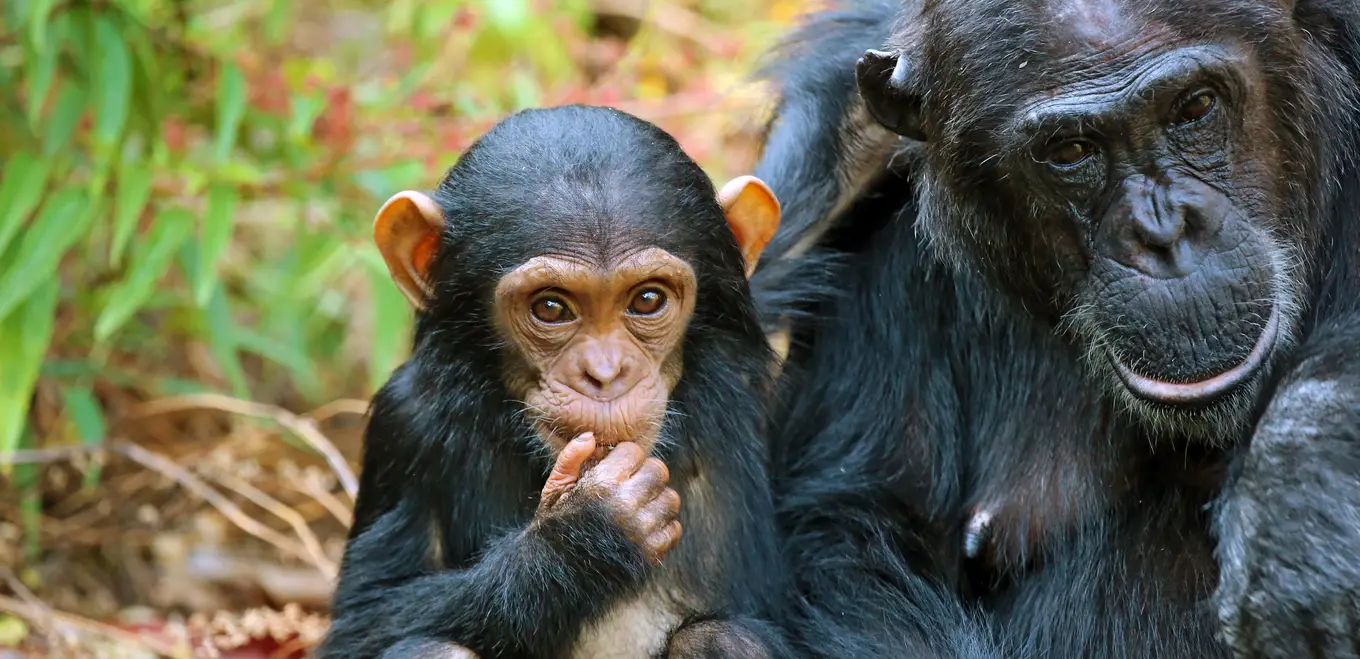
While gorilla trekking is Rwanda’s primary tourist attraction, there are numerous other attractions to explore. Nyungwe Forest National Park features a vast forest where visitors can track wild chimpanzees on foot and observe a diverse array of forest-dwelling birds and monkeys.
In contrast, Akagera National Park offers a more classic savannah safari experience, boasting sightings of the Big Five (lion, leopard, buffalo, elephant, and both African rhino species).
It’s highly recommended to combine a visit to one or both of these parks with gorilla trekking, which can be enjoyed year-round. Moreover, if you plan your visit between November and May and spend a minimum of two nights in the other parks, you can benefit from a 30% discount on your gorilla permit.
11. Which season is best for gorilla trekking?
The best periods for gorilla trekking in Rwanda are during the dry seasons of June to early September and December to February.
However, weather conditions can be erratic, so occasional rainfall should be anticipated even in the dry season. For more details on the ideal times to visit Rwanda for gorilla encounters, further information can be found here.
12. Where to stay on a Rwanda Gorilla Safari?
For those planning a gorilla trekking tour in Rwanda, a variety of accommodations await, from cozy safari lodges to laid-back tented camps, catering to every preference, budget, and type of trip. Explore our blog for recommendations on where to stay in Rwanda for your gorilla trekking adventure.

Tips for a better gorilla trekking experience
- Wear sturdy hiking shoes suitable for slippery terrain.
- Use a walking stick provided at the beginning of your trek.
- Consider bringing gardening gloves for handling branches and trees.
- Dress in long-sleeved clothing to protect against scratches and insect bites in dense vegetation.
- Carry a facemask, which is required during the gorilla encounter.
- Pack essentials like a raincoat, sunscreen, 2 liters of water, and snacks or a packed meal.
- Capture memorable close-up shots, focusing on hands, feet, or faces.
- Take moments to observe the gorillas without distractions. Put away your camera to fully appreciate the experience. You may also like the recommended packing list for gorilla trekking
